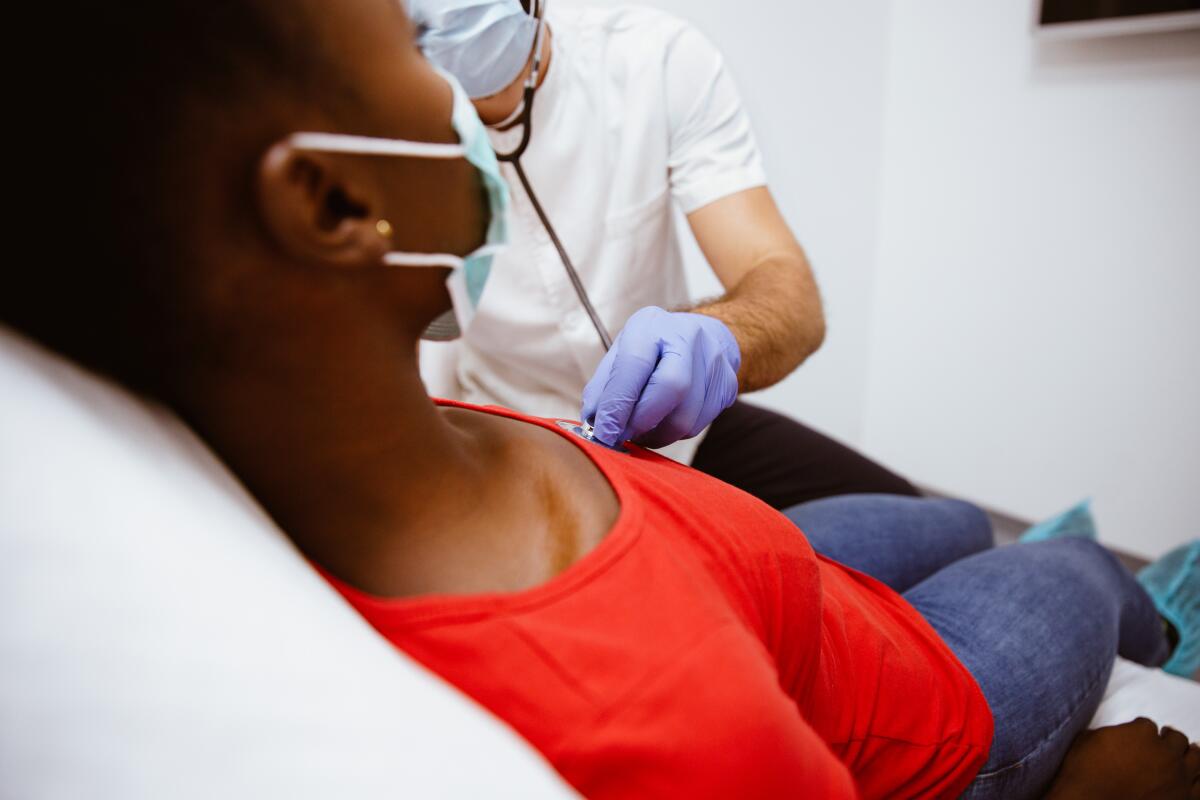Doctors are urged to screen kids for heart issues. That could have helped my sister and me

- Share via
When my younger sister was 18, she began fainting in her dorm room at the University of Colorado Boulder. By the time I passed out in a parking lot a year and a half later — at age 24 — we knew that a genetic heart arrhythmia called Long QT Syndrome (Type 2) was the culprit. An electrical abnormality that made our hearts quiver instead of pump, Long QT could have caused both of us to die of cardiac arrest.
My sister and I were lucky; our hearts resumed a normal rhythm quickly enough that we survived. But for too many families, the sudden death of a young person provides their first inkling that a genetic heart disorder runs in the family. Researchers estimate that more than 7,000 young people die each year of sudden cardiac death. Regular screenings by pediatricians — regardless of a youth’s athletic status — could change this.
In late June, the American Academy of Pediatrics published a new set of guidelines in the journal Pediatrics calling for all children to be screened for heart-related issues as they enter middle school, regardless of their athletic status. The questions are simple, inquiring about exercise-related chest pain, shortness of breath, unexpected fainting and family history. And they’re absolutely essential.
Though no single set of screening questions will catch all heart disease, it’s easier to notice patterns if we’re trained to look for them. A “bad luck” family history of sudden drownings and unexplained car crashes might point to a genetic arrhythmia.
For instance, my great-great-grandmother died at age 20 in 1899 in the months after she gave birth — a story we didn’t become aware of until my sister was diagnosed but which fits the Long QT profile. Studies have shown that women with Long QT Syndrome (Type 2) bear an increased risk of cardiac arrest during their first nine months postpartum.
I felt chest pains as a kid — but told myself bodies were just weird. When my heart raced in my early 20s, I chalked it up to anxiety or tried nutritional “cleanses” to identify food allergies. When my sister first passed out, doctors investigated for seizures and asked about her alcohol use — missing the fact that the sudden jangling of her roommate’s alarm clock had been the trigger for several of her strange faints.
Before I woke up in that parking lot with gravel in my forehead, I’d never had an electrocardiogram. But once I did, the electrical abnormality in my heart was immediately obvious. Screening questions at a regular check-up, which in my case would likely have led to an EKG, might have speeded up our family diagnosis.
It’s rare for those of us who know we have a sudden arrhythmia death syndrome to die because of it. A diagnosis leads to treatments that meaningfully change a child’s risk of sudden death.
Both my sister and I — and, after genetic testing, my father — began beta blocker medications to manage our condition (although I have since discontinued this treatment because of intolerable side effects). These highly effective drugs limit the release of stress hormones in the body that can make our hearts erratic. We follow a “medications to avoid” list, abstain from certain high-adrenaline activities and exercises, and have changed the style of alarm clocks we use, since Long QT (Type 2) is often triggered by the startle response.
When I make decisions that might increase my risk of cardiac arrest, I do so knowingly — and can communicate about my situation to those around me.
Although having a defibrillator implanted is not the right solution for every patient, both my sister and I carry these potentially lifesaving devices in our chests. Because of the new screening guidelines, other families might gain the lifesaving knowledge that would inspire them to become activists, ensuring the presence of automated external defibrillators at schools and sporting events, in case someone needs to be resuscitated.
My sister and I were lucky. She never went into cardiac arrest at a high school swim meet. I never passed out on a backpacking trip, many miles from medical care. But all too often we hear the heartbreaking stories of high school athletes who collapse on the field and are gone. Too many families have suffered the loss of one or more children because the first symptom they notice is cardiac arrest — and by then it is too late. Following the new guidelines can help prevent those deaths.
Katherine E. Standefer is the author of “Lightning Flowers: My Journey to Uncover the Cost of Saving a Life.”
More to Read
A cure for the common opinion
Get thought-provoking perspectives with our weekly newsletter.
You may occasionally receive promotional content from the Los Angeles Times.









